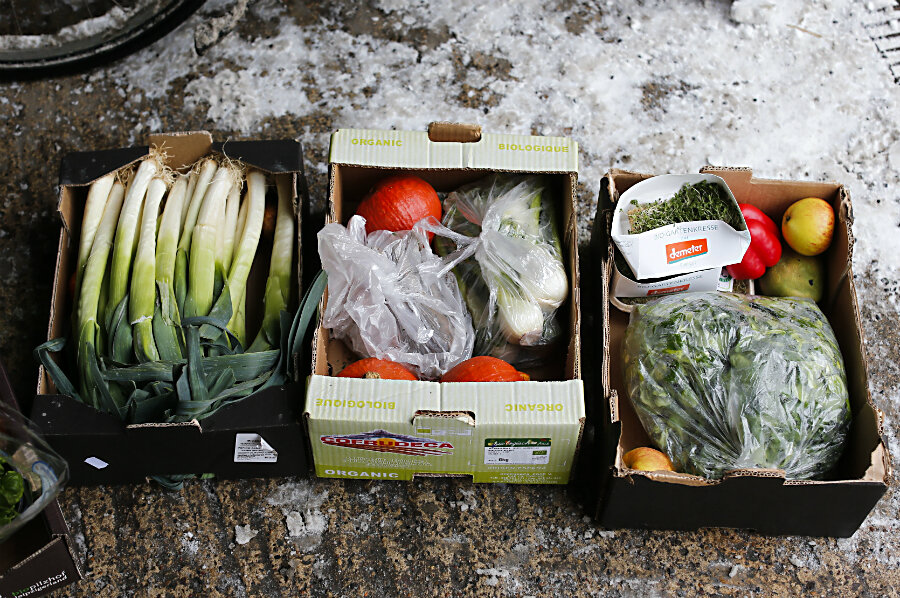Putting food waste back in the food chain
Loading...
It’s a jarring reality and by now a well-known fact that an estimated 1.3 billion tons of food is wasted around the world each year, and the Food Innovation Summer School Mediterraneo is examining these problems in Sicily and searching for solutions.
Whether it’s from the farm, at the store, or around the dinner table, the truth is that food waste remains a costly problem economically, environmentally, and nutritionally. Countries are losing billions in wasted food as well as paying the environmental price when food and packaging piles up in landfills. At the same time, calories are wasted, nutritionally speaking, at a time when the U.N Food and Agriculture Organization (FAO) estimates that about 795 million people were suffering from chronic undernourishment from in 2014.
Studies have pointed out that, in general, European per capita numbers for food waste are lower than those in North America, but that doesn’t mean the problem is non-existent on the other side of the Atlantic. In fact, tucked into the northeast coast of Sicily is the University of Messina and its state-of-the-art PAN Lab that is dedicated to the study of waste in the agricultural and food sectors in Italy.
As part of the of the Food Innovation Summer School Mediterraneo, a three week-long crash course of intensive learning surrounding food, innovation, entrepreneurship, and the Mediterranean diet, the 22 international students from the program were invited to the PAN Lab to explore the Save & Sort project with engineering consultant Giuseppe Galatà and University of Messina professors Maurizio Brocato and Vincenzo Chiofalo.
In Italy, 6 percent of national waste comes from food products, which amounts to about 76 kilograms per person of wasted food per year. However, the country is already working hard to make sure food is recovered before it is wasted by making it easier for food retail points to donate their food. The Save & Sort project of PAN Lab is hoping to augment the amount of recovered food by reinserting it back into the food chain through the production of animal feed from organic waste. For the past four years the PAN Lab team has processed 50 tons of fruit and vegetable waste from over 280 involved retailers. In the cities of Messina and Ragusa in Sicily and the city of Cosenza in Calabria, the team has put in over 24 months of vigorous testing to create a safe and nutritionally sound livestock feed product from food waste. And what have they found out?
Purely research-based in approach, Save & Sort is a two-pronged method to reducing and repurposing waste along the food chain. Maurizio Brocato explains that the Sort component, with its research into information and communication technology, comes into play at three different stages in the food chain. The first objective is to collect data from food that is already in retail locations, including expiration date and origin, to make centralized collection feasible. At the same time, Sort works to create physical technology that will easily disassemble food packaging so that the packaging can continue to be recycled but the food can be extracted and reused. Lastly, Sort works to redistribute the transformed food back into the food chain with the help of the Save aspect.
The Save component is working to find, reach, and satisfy new users of wasted edible goods. Save attacks at the production, transformation, and trade stages of the food chain, collecting food that is often wasted because of lack of perceived value by consumers (for example, products close to their expiration date or slightly damaged fruits and vegetables). From collecting, analysis, and transformation, Save turns food waste into animal fodder.
The Save project has followed the wasted food from start to finish over the past four years: in its original form, through its transformation into animal feed, and finally as a consumable product for human consumption. Working with the Filiera Carni Sicilia, a research company dedicated to control and certification of local meat products, the team took standard measurements like protein content of the fodder, palatability for the animals, quality of the produced meat, microbiological tests, and parasitological tests and found that all categories are safe, nutritional, and comparable to traditional livestock fodder.
The implications of such a system that is still in its research phase are two-fold. Not only does it provide an outlet for food waste to be reinserted back into the food chain, but it could potentially reduce Italy’s reliance on imported animal feed. The team projects that 3 million tons of foodstuff could be created annually from Italy’s food waste, accounting for 20 percent of the Italian demand for bovine fodder. When it comes to food waste, it’s obvious that at every stage (from consumer to market to national regulation), we can make changes to cut down the social, economic, and environmental cost of waste, but we still must accept that food waste exists. There are many campaigns fighting food waste at every level, and PAN Lab’s Save & Sort program is definitely one to note.
This article originally appeared on Food Tank.







